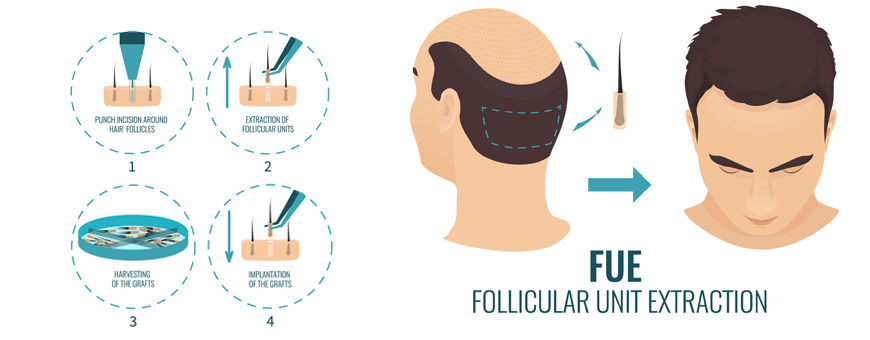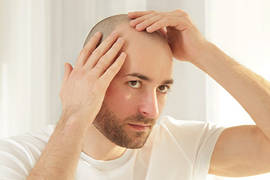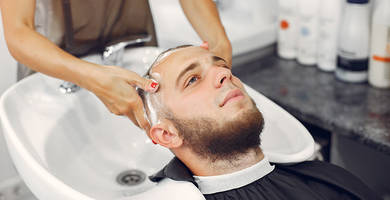FUE treatment: what are its side effects after a hair transplant?
By Prof. Dr. Soner Tatlidede 2019-07-30

Despite being a cutting-edge technique, the FUE treatment has some side effects that must be considered if you are thinking of getting a FUE hair transplant in Turkey. Therefore, in this article we will discuss the advantages of this method as well as the side effects related to hair transplant procedure using the Follicular Unit Extraction technique.
Advantages and disadvantages of the FUE hair transplant
This technique is considered safer compared to previous ones
In the old hair transplant techniques, the used procedure involved surgical intervention using surgical tools. It involved cutting a part of the scalp that contains hair follicles, and then closing the area by suturing.
However, follicles extraction does not involve those painful steps, because one follicle is extracted each time using needles ranging between 0.7 mm and 1 mm, depending on the follicle's diameter. This is estimated by our professional medical staff when performing the surgery at our Clinicana Hair Transplant Center in Istanbul.
There are no cuts that need to be closed after the procedure; so, most of the hospitals and trusted medical centers around the world -including Clinicana- consider that the FUE method has less side effects and is safer compared to the traditional techniques, which is a great advantage.
The surgery does not form scars, thus getting a natural look
In addition to the fact that extraction method is less harmful, it does not cause a linear scar on the scalp due to the implanting procedure of the hair follicles, as in the old techniques. Therefore, there would be no scars in the patient's head that may force him to have a long hair to cover them.
Faster healing and recovery period, and less pain after the surgery
Many hair transplant experts agree that a hair transplant using the follicular extraction method, which is safer, leads to a faster healing and recovery period compared to the traditional methods. The extraction technique causes less pain and discomfort in the donor area since there is no need to close the cuts, no surgical suture, and no increasing pressure in the donor area during the recovery period.
In general, patients who undergo a hair transplant using the extraction method sleep better after the procedure, and they go back to work, normal life and daily activities faster. This includes exercise and weight lifting, which are forbidden for more than 3 months after getting a hair transplant using the old methods.
Larger number of follicles can be transplanted, and hair can be extracted from areas other than the scalp
The follicular extraction method allows extracting hair follicles from various areas in the scalp and the body. This includes extracting follicles from the back of the head between the ears, the upper neck and the beard, where there is a vital hair donor area; but also extracting hair follicles from other parts of the body and implanting them in the scalp, something that is referred to as body hair transplant.
Although the life cycle of the body hair follicles is different from that of the scalp hair follicles, this method may be useful for reform procedures, and significantly increases the number of follicles available for a hair transplant procedure.
We can select and choose the best follicles for a transplant
Hair transplant using the extraction method allows doctors to choose the optimal hair follicles for the implanting procedure. This involves identifying, isolating and choosing single hair follicles to implant them in the hairline area, which is important for the general appearance, and choosing thicker and stronger hair follicles to implant them in other areas in the scalp where necessary.
However, in the traditional methods doctors had to use the follicles they get without being able to choose; thus, sometimes they had to remove hair from double, triple and quadripartite hair follicles just to get single hair follicles and be able to implant them in the hairline to get a natural appearance. Moreover, they should assemble single hair follicles together -often referred to as "combine"- to enhance the appearance of a greater density.
This method is considered optimal for small and precise cases (e.g. reconstructing the eyebrow)
Since using the extraction method is generally less harmful, easier and faster than traditional methods, it is often optimal for small and precise cases. For instance, the extraction method is optimally suitable for younger patients who need a small amount of grafts and don't want to get a linear scar like the one caused by the old method of hair transplant.
In addition, choosing hair follicles is perfectly suitable for precise procedures like reconstructing the eyebrow, as it is possible to extract a few selected grafts (i.e. single follicles) leaving minimum scars.
FUE hair transplant side effects
In general, FUE hair transplant does not have long term side effects; however, if the patient does not commit to the instructions, some side effects may occur.
For example, smoking is not allowed one week before the procedure and one week after it; but if the client does not commit to that, hematoma -small patches under the skin with dark red color, where hair does not grow- may occur.
Therefore, our medical team always emphasizes that patients should commit to the instructions and avoid smoking before and after the procedure to guarantee getting the best result, and to avoid any side effects after a FUE hair transplant.
Swelling or edema
Clients are advised to rest completely after the hair transplant procedure. Sometimes people exert some effort after the procedure, causing swelling or edema in the headline and under the eyes. This is because fluids injected during the procedure go down to the facial area; however, this swelling lasts for one week at most, and then disappears.
Our medical team in Istanbul always emphasizes the importance of resting after the procedure to avoid the swelling. It is worthwhile mentioning that if the patient commits to resting and not exerting any effort, no swelling or edema will happen.
Itching
Sometimes the client feels itching in the donor area after the hair transplant procedure, which may last for a few days and it is a normal minor side effect. This condition may be easily managed using medical creams that will make the itching go.
Redness
Redness appears in the donor area and receptor area and goes away automatically within 10 days.
Numbness
Numbness occurs when the patient doesn´t feel the implanted area and the donor area due to the anesthesia applied on them during the procedure; it lasts until the anesthesia effect goes away: i.e. after two weeks for the donor area, and after one month to 3 months in the implanted area.
Will I feel any pain after the hair transplant procedure?
In fact, there would be no pain after the procedure, even after the patient gets out of the center. The maximum thing that could happen is maybe a minor headache just during the first day, and it is easily treated with painkillers.
Does hair transplant procedure cause cancer, or increase the risk of it?
Some people circulate many rumours and wrong information that have no scientific or medical basis on social media and forums. Hair transplant has nothing to do with cancer at all, so we always encourage our clients everywhere not to listen to such information with no scientific or medical basis.
FUE treatment has side effects, but as we explained before they occur only in some cases and because of patients not listening to their doctor’s instructions before and after the hair transplant procedure. And in any case, these side effects are only temporal and easily treated.









